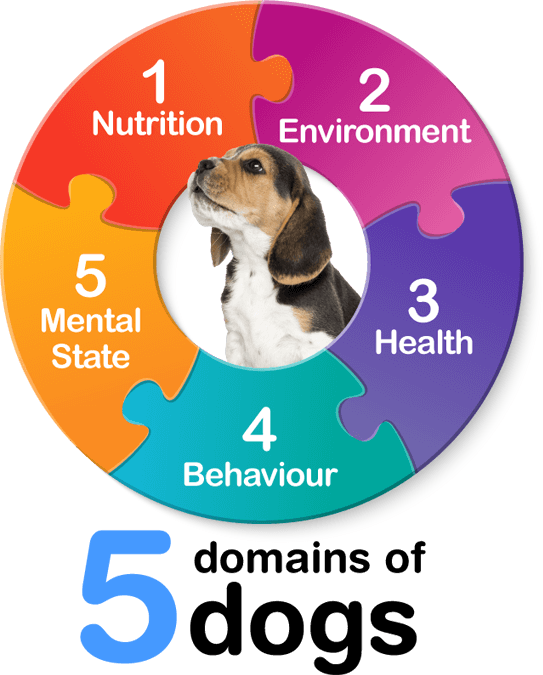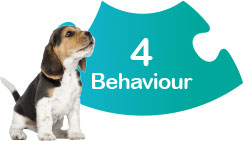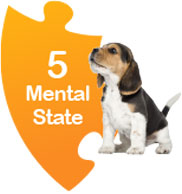
Dog welfare, in essence, refers to the physical and mental well-being of our canine companions. It encapsulates everything from their diet and health to their environment and behaviour, each contributing to the overall quality of a dog’s life. Ensuring good welfare isn’t just about providing food and shelter; it’s about understanding and meeting the complex, inherent needs of a dog as a unique species.
By delving into this subject, we aim to broaden our understanding of what it truly means for a dog to live a good life beyond the confines of anthropomorphic tendencies and humanisation.
The concept of dog welfare becomes ever more crucial in an era where dogs are increasingly seen as extensions of human families. While the humanisation of dogs can lead to strengthened emotional bonds, it can, paradoxically, also lead to a disregard for the specific needs of the species. For instance, feeding dogs human food or expecting them to behave like little humans can result in negative consequences for their health and well-being.
To navigate these complexities, we look to the „Five Domains” model, a comprehensive framework for understanding and enhancing animal welfare. The Five Domains represent the key areas that influence an animal’s welfare: Nutrition, Environment, Health, Behaviour, and Mental State. This model allows us to move beyond simplistic or misleading views of welfare towards a more nuanced understanding that considers the animal’s physical and psychological needs.
Understanding these domains isn’t merely an intellectual and theoretical exercise; it’s a practical necessity of everyday life for anyone responsible for a dog’s welfare. By comprehending these domains, we can set rational and achievable objectives for our dogs’ well-being, avoiding undue harm and ensuring a fulfilling life for our pets.
It is also vital to understand that the different sections of each domain cover complex areas of different scientific fields. Science is ever-evolving and does not always have a simple answer. Therefore, it is crucial to regularly update and challenge our knowledge as it is never easy to find accurate practices in all cases when we intend to maintain the welfare of dogs.

Domain 1
Nutrition – Proper Feeding
Nutrition is a cornerstone of health, growth, and disease prevention. Just as the quality of bricks and mortar determines the strength of a house, so too does nutrition shape the vitality and well-being of our canine companions.
Nutrition, in essence, is the science of sustenance. It concerns the nutrients a dog requires for optimal health and the food sources where these nutrients are found. Proper nutrition provides the building blocks for every cellular process in a dog’s body, from growing new cells to repairing damaged ones and from fuelling physical activity to fending off diseases.
In puppies, proper nutrition is particularly crucial. It supports their rapid growth and development, ensuring they mature into strong, healthy adults. It is the foundation upon which a dog’s life is built. Providing inadequate nutrition during this period can have lifelong consequences, impacting the dog’s size, strength, and overall health.
But nutrition isn’t just vital during a dog’s early stages; it’s a lifelong necessity. A balanced, nutrient-rich diet helps maintain an adult dog’s body condition, supports their immune system, and fuels their daily activities. It can also help in the prevention of diseases. For instance, a diet that maintains a healthy weight can prevent obesity-related conditions like diabetes and arthritis, while a diet rich in antioxidants can support immune function and potentially delay the onset of age-related diseases.
Regrettably, improper feeding practices often lead to unhealthy dogs. Overfeeding can result in obesity, a condition linked with numerous health issues, including diabetes, heart disease, and joint problems. On the other hand, underfeeding or providing a nutritionally unbalanced diet can lead to deficiencies and diseases, stunted growth in puppies, and a compromised immune system.
Moreover, the modern-day trend of anthropomorphising dogs often extends to their diet, with well-meaning owners sharing human foods that are inappropriate or even harmful to dogs. It’s crucial to remember that dogs have distinct nutritional needs that differ significantly from humans.
Summary:
Nutrition is a powerful tool for promoting health and preventing disease. It goes beyond merely feeding your dog; it involves providing the correct quantity and quality of food to support every stage of their life. A nutritionally balanced diet can contribute to a healthy, active, and fulfilled life for our dogs, underscoring why nutrition is such a critical domain in dog welfare.

Domain 2
Environment – Suitable Living Conditions
The Environment domain extends beyond the physical space a dog inhabits; it encapsulates all the external conditions and stimuli that a dog interacts with, from the air they breathe to the ground they tread upon. The environment plays a profound role in influencing both the health and behaviour of our canine companions.
Firstly, consider the physical aspect of the environment. Dogs, like all creatures, require suitable living conditions to thrive. This involves shelter from harsh weather, a comfortable resting area, space for movement and exercise, and clean water and air. A dog’s environment should be safe, secure, and free from hazards that could cause harm.
For instance, cramped, unhygienic living space can lead to both physical health problems, such as skin diseases and respiratory issues, and behavioural issues, like stress and anxiety. Conversely, a spacious, clean, and stimulating environment can promote physical health and encourage normal, healthy behaviours, such as play and exploration.
The influence of the environment also extends to the sensory experiences it offers. Dogs experience the world mainly through their senses of smell and hearing. An environment rich in appropriate sensory stimuli can provide mental stimulation and contribute to a dog’s overall well-being. However, an environment with overwhelming or distressing sensory inputs, such as loud noises or strong chemical smells, can cause stress and anxiety.
Environmental pollution is a significant concern in this regard. Pollutants in the air, water, or soil can negatively impact a dog’s health. Exposure to harmful substances, such as toxic chemicals or heavy metals, can lead to various health problems, from respiratory issues to cancers. As caretakers of our dogs, it is our responsibility to reduce these harmful effects as much as possible. This might involve choosing cleaner, greener products for our homes, ensuring our dogs have access to clean water, and advocating for cleaner environments in our communities.
The environment also shapes a dog’s behaviour. For example, a dog living in a stimulating, interactive environment is likely to exhibit a broad range of normal behaviours. On the other hand, a dog in a restrictive or stressful environment may display problem behaviours, such as excessive barking, destructiveness, or aggression.
Summary:
The Environment domain underscores the profound impact of a dog’s surroundings on its health and behaviour. Suitable living conditions, free from harmful pollutants and enriched with appropriate stimuli, are vital in promoting the welfare and ensuring a dog leads a happy, healthy life. The complex relationship between a dog and its environment reinforces the importance of understanding and providing for our dogs’ needs in a holistic, comprehensive manner.

Domain 3
Health - Disease Prevention and Veterinary Treatment
The Health domain, perhaps more than any other, underscores the intricate complexities of ensuring a good life for our dogs. Health is not merely the absence of disease, but a state of complete physical, mental, and social well-being, a multifaceted concept with numerous influencing factors.
First and foremost, it’s important to understand that health isn’t a one-size-fits-all concept when it comes to dogs. Different breeds have different genetic backgrounds and vulnerabilities.
However, genetics is just one piece of the puzzle. Environmental factors also play a significant role in determining a dog’s health. As we’ve explored previously, elements such as nutrition and environment profoundly influence a dog’s well-being. A balanced diet and a stimulating, safe environment can bolster a dog’s health, while poor nutrition and an unsuitable environment can intensify vulnerabilities and lead to health issues.
Exercise and stress are two other significant environmental factors. Regular, appropriate exercise helps maintain a healthy weight and cardiovascular health, and it can even boost a dog’s mood. Meanwhile, chronic stress, whether due to environmental, social, or health-related factors, can weaken a dog’s immune system and make them more susceptible to disease.
Disease prevention is a crucial aspect of the Health domain. Regular veterinary check-ups, vaccinations, parasite control, dental care, and weight management are all key components of preventative healthcare. Early intervention is paramount; many conditions, when detected and managed early, can be treated more effectively, resulting in better outcomes for the dog.
When a dog does fall ill, access to prompt and appropriate veterinary treatment is essential. Veterinary professionals can diagnose and treat a wide range of health conditions, from acute injuries to chronic diseases. They can also provide guidance on managing a dog’s health at home, including medication administration, wound care, and supportive care for chronic conditions.
Summary:
The Health domain reminds us of the complex interplay of genetics, environment, and healthcare in determining a dog’s well-being. It underscores the importance of proactive disease prevention and early intervention, and it highlights our role as caretakers in managing and mitigating environmental risks.

Domain 4
Behaviour – The Ability to Express Normal Behaviour
The Behaviour domain focuses on the ability of dogs to express normal, species-specific behaviours. Behaviour, in essence, is the outward manifestation of a dog’s internal state and its interactions with the environment. Through behaviour, dogs communicate, explore their world, and fulfil their innate needs.
Understanding the importance of allowing a dog to express normal behaviour requires a deep appreciation for the fact that each breed of dog has been selectively bred for specific traits over hundreds, if not thousands, of years. This selective breeding has resulted not only in physical differences between breeds but also significant behavioural differences.
For instance, Border Collies have been bred for their herding instincts, while Beagles have been bred for their tracking abilities. To reject the opportunity of expressing these behaviours from these dogs can lead to frustration, stress, and the development of problems in behaviours. A Border Collie without a job to do may resort to herding children or cars, while a Beagle denied the chance to use its nose may become destructive or excessively vocal.
It is also important to acknowledge that certain behaviours considered ‘normal’ for a particular breed may not align with a human’s expectations or lifestyle. Just think about guarding dogs with immense territorial instincts in a crowded city. This highlights the importance of choosing a breed that suits one’s lifestyle and being prepared to provide appropriate outlets for their natural behaviours.
If a dog cannot express its normal behaviours, the consequences can be significant. Dogs that are not allowed to fulfil their behavioural needs can become stressed, anxious, or depressed. They may exhibit problem behaviours, such as destructiveness, aggression, or excessive barking, as a form of coping mechanism. These behaviours are often misinterpreted as ‘bad behaviour’ when they are, in fact, signals of unmet needs.
By providing dogs with opportunities to express their natural behaviours, we can improve their quality of life and strengthen our relationship with them. You need to keep this in mind when you construct your dog’s environment and activities your dog can complete on a regular basis. This might involve providing toys that cater to a dog’s instinctual behaviours, such as puzzle toys for dogs bred to work or scent games for breeds with a strong tracking instinct.
Summary:
The Behaviour domain emphasizes the importance of understanding and respecting the behavioural needs of our dogs. Recognizing that dogs are not merely smaller, furrier humans, but creatures with their own unique needs and behaviours, is fundamental to ensuring their welfare.

Domain 5
Mental State – Mental Stimulation and Avoiding Mental Stress
The Mental State domain covers the psychological well-being of our dogs, including their emotional experiences, cognitive stimulation, and stress levels. Understanding and catering to a dog’s mental state is as crucial to its welfare as attending to its physical needs.
Firstly, consider the importance of behavioural development, which evolves over different stages of a dog’s life. Just as a puppy grows physically, it also develops mentally, learning about its environment, mastering social skills, and forming emotional responses. Failure to provide appropriate socialisation and learning experiences during this critical period can lead to behavioural problems and mental distress later in life.
Stress is a key factor in a dog’s mental state. While a certain amount of stress is beneficial in the learning process and in helping dogs respond to threats and challenges, chronic stress can be harmful. When a dog’s nervous system is constantly on alert, it can lead to mental distress and even physical health problems, such as weakened immunity and digestive issues. Chronic stress can also exacerbate behavioural problems, leading to a vicious cycle of stress and undesirable behaviour.
Resilience is another critical aspect of a dog’s mental state. Resilience refers to a dog’s ability to cope with hard times and bounce back from stressful experiences. While it might be tempting to shield our dogs from all negative experiences, this can be counterproductive. Like humans, dogs need to experience and overcome challenges to build resilience. As caretakers, our role is to provide supportive, secure environments that allow dogs to learn and grow, not to eliminate all potential stressors.
Mental stimulation is a vital part of a dog’s mental state. Just as dogs need physical exercise to stay fit and healthy, they also need mental exercise to keep their minds sharp. This can come in various forms, such as training exercises, puzzle toys, or interactive play. Providing mental stimulation can help prevent boredom and associated problem behaviours, and it can also improve a dog’s problem-solving skills and cognitive function.
Finally, it’s essential to understand the complex relationship between a dog’s mental state and its health. Mental distress can lead to physical health problems, and conversely, physical health problems can lead to mental distress. Behavioural problems, a key indicator of mental distress, can also impact a dog’s health, underscoring the interrelation of the Five Domains.
Summary:
The Mental State domain illustrates the complex inner world of our dogs. By providing mental stimulation, managing stress, and supporting behavioural development and resilience, we can promote our dogs’ mental well-being, contributing to a richer, more fulfilling life for them.


